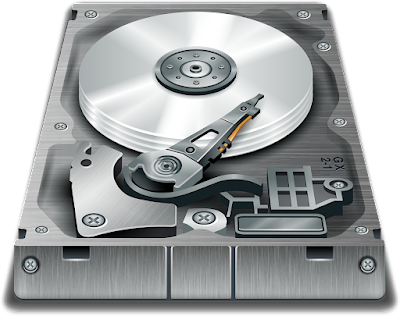Differences Between SDD and HDD | Hard Disk Drive VS Solid State Drive
 |
| HDD |
Both Hard Disk Drive (HDD) and Solid-State Drive (SSD) are non-volatile storage hardware devices that are used by laptops, computers, digital video recorders, etc., in order to store information, data, devices setting, programs, etc.
The important difference between Hard Disk Drive (HDD) and Solid-State Drive (SSD) is the technology that is used to store information.
Hard Disk Drive (HDD) is acknowledged to be an electromechanical drive that comprises moving disks named platters that are used to store magnetically the data. In contrast, Solid-State Drive (SSD) is a device that does not contain moving parts or disks like HDD, but it contains integrated circuits (ICs) that are used to store the data.
Hard Disk Drive (HDD) is an old technology while Solid-State Drive (SSD) is the new technology based on integrated circuits (ICs) and semiconductor chips.
Definition of Hard Disk Drive (HDD)
It stands for the hard disk drive, that is used to store information. Basically, the data is stockpiled enduringly within the platter mechanically. That data can be read and write using the support or arm that contains numerous heads.
The HDD is acknowledged to be an ancient storing data and information method, it is commonly appropriate for storing such types of information that contain less frequent entrees, like pictures, clips, audios, files, etc.
The read-write process inside the disk takes place with the assistance of a transducer over which the pattern on the HDD is any sensed or changed.
The normal sizes for Hard Disk Drive (HDD) are about 2.5 inches and 3.5 inches for laptops and desktops respectively. The rotating speed of the one existing on the desktop is about 7200 rpm that can stock up to 6 terabytes of information. Whereas that of the one existing in a laptop is around 5400 rpm that permits storing up to 2 terabytes.
With the progression in knowledge and technology, integrated circuits (ICs) have substituted magnetic disks that have enhanced energy consumption and shock resistivity.
Definition of SSD
Solid State Drive (SSD) is flash-based storage such as Random-Access Memory (RAM) which contains electronic mechanisms and components but no moving parts for storage information and data. It is a device that provides an extended lifetime than Hard Disk Drive (HDD) with 0 noise and dependable operations.
It offers the ability to entree the information at a quicker rate because of the knowledge and technology involved. Solid State Drive (SSD) consists of many logic gates (NAND memories) that are linked with each other over 8-bit buses mentioned as channels for joining the memories with the monitoring part (controller). The usage of several flash memories eases the offering of additional storage space along with offering improved read/write performances.
The entree to the numerous memory stations is planned by the memory monitoring part or controller. The memory controller aids in preserving correct interfacing between the processor or central processing unit and the ROMs. Also, it competently manages the information transmission.
One of the features that limit the usage of Solid-State Drive (SSD) in desktops and laptops is its high price. The is so since, for the same capacity, Solid State Drive SSD is about 2 to 3 or 4 times more expensive than Hard Disk Drive (HDD). Nevertheless, due to its numerous advantageous features, NAND gates flash memory-based Solid State Drive SSD has increased wide rank as secondary memory in current computing structures.
Conclusion (HDD VS SSD)
To say the truth, from this conversation one can achieve that both SDD and HDD are non-volatile storing devices that display a significant difference in terms of the technique they are made up as well as work. These features give rise to numerous differentiating ideas between them in terms of price along with storing space and productivity in the process.


0 Comments
Post a Comment